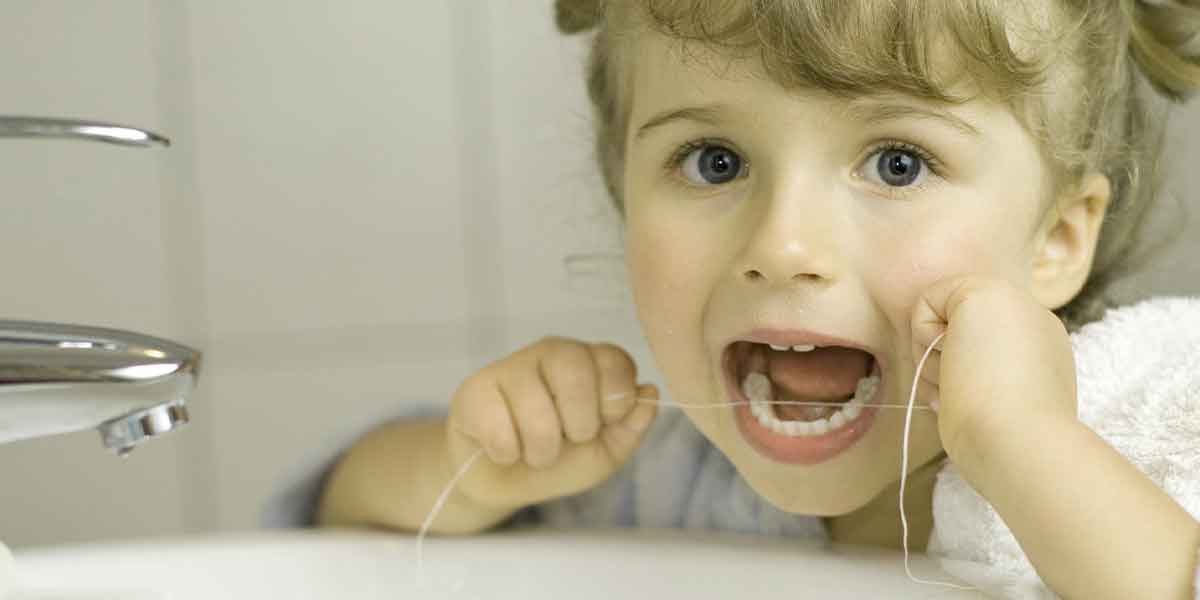Instructing kids on the importance of flossing their teeth is a critical aspect of maintaining optimal oral health. Nevertheless, many parents have inquiries regarding the appropriate time and method to introduce flossing into their child’s daily regimen. This article will address the top five queries parents commonly have about children’s teeth flossing, offering essential guidance and recommendations to ensure your child establishes healthy flossing practices.
Commencing Flossing at an Early Age
Flossing plays a crucial role in oral hygiene by eliminating plaque and food debris from between the teeth and along the gumline, areas inaccessible to a toothbrush. Parents frequently ponder when their child should commence flossing.
Age to Initiate Flossing
Children should begin flossing when they have two teeth that touch, typically around 2 to 3 years old. At this stage, parents should assist their child in flossing as young children lack the dexterity to floss effectively on their own.
Establishing a Routine
Integrating flossing into your child’s daily oral care routine early on can help instill the habit. Flossing once a day is generally adequate and can be performed at any time, though many parents find it convenient to include it in the bedtime brushing routine.
Proper Technique for Flossing a Child’s Teeth
Adhering to the correct flossing technique is essential for efficiently removing plaque and preventing gum disease. Here are some steps to ensure you floss your child’s teeth correctly:
Selecting the Appropriate Floss
Various types of dental floss are available, such as traditional string floss, floss picks, and flossers tailored for children. Choose a type that is comfortable and easy to use on your child’s small teeth.
Flossing Procedure
- Utilize approximately 18 inches of floss, wrapping most of it around your middle fingers and leaving a few inches to work with.
- Hold the floss firmly between your thumbs and forefingers.
- Gently guide the floss between your child’s teeth using a gentle sawing motion.
- Shape the floss into a C around each tooth and slide it under the gumline.
- Move the floss up and down to clean the sides of each tooth.
- Employ a fresh section of floss as you progress from tooth to tooth.
Tips for Effective Flossing
- Exercise gentleness to prevent harming your child’s gums.
- Ensure to floss behind the back teeth.
- Encourage your child to be patient and thorough.
Encouraging Flossing and Overcoming Resistance
Children may resist flossing, particularly when it is a new addition to their routine. Here are strategies to make flossing a more enjoyable and accepted part of their daily oral care:
Making Flossing Enjoyable
Transform flossing into a fun activity by utilizing flavored floss or floss picks with engaging designs. You can also create a song or game related to flossing to keep your child interested and motivated.
Setting a Positive Example
Children are more likely to adopt good oral hygiene habits if they witness their parents practicing them. Floss your teeth alongside your child to demonstrate that flossing is a normal and essential aspect of dental care.
Providing Positive Reinforcement
Employ positive reinforcement to motivate your child to floss. Acknowledge their efforts and consistency, and consider implementing a reward system, like a sticker chart, to monitor their progress and celebrate their achievements.
Addressing Concerns about Gum Health and Flossing
Parents may be apprehensive that flossing could harm their child’s gums, particularly if they observe bleeding. Here’s what you should know about flossing and gum health:
Correct Technique to Prevent Injury
When executed correctly, flossing should not harm your child’s gums. It is crucial to use a gentle touch and avoid snapping the floss between the teeth, which can lead to injury. If persistent bleeding occurs, it may indicate gum inflammation or other dental issues, necessitating consultation with your dentist.
Bleeding Gums
Minor bleeding may occur when your child initially starts flossing, as the gums are unaccustomed to the stimulation. However, if bleeding persists after consistent flossing for several days, it could signify gum disease or improper flossing technique, warranting professional advice from your dentist.
Exploring Alternatives to Traditional Flossing Methods
If traditional flossing proves challenging or uncomfortable for your child, alternative techniques can effectively clean between the teeth:
Floss Picks and Flossers
Floss picks and flossers serve as convenient substitutes for traditional string floss. They are easier to handle, especially for young children, streamlining the flossing process.
Water Flossers
Water flossers utilize a water stream to eliminate plaque and food particles from between the teeth and along the gumline. They can be a suitable option for children struggling with conventional flossing, though parental supervision is advised to ensure proper usage.
Interdental Brushes
Interdental brushes are small brushes designed for interdental cleaning. Available in various sizes, they can be a beneficial alternative for children with wider gaps between their teeth.
Conclusion
Flossing is a fundamental component of preserving optimal oral hygiene in children. By initiating flossing early, employing correct techniques, and making flossing an enjoyable and positive experience, you can assist your child in cultivating healthy flossing habits that will benefit them in the long run. If you have concerns regarding your child’s flossing or oral health, do not hesitate to seek personalized advice and guidance from your dentist. With the right approach and tools, flossing can become a routine and stress-free aspect of your child’s daily regimen.




